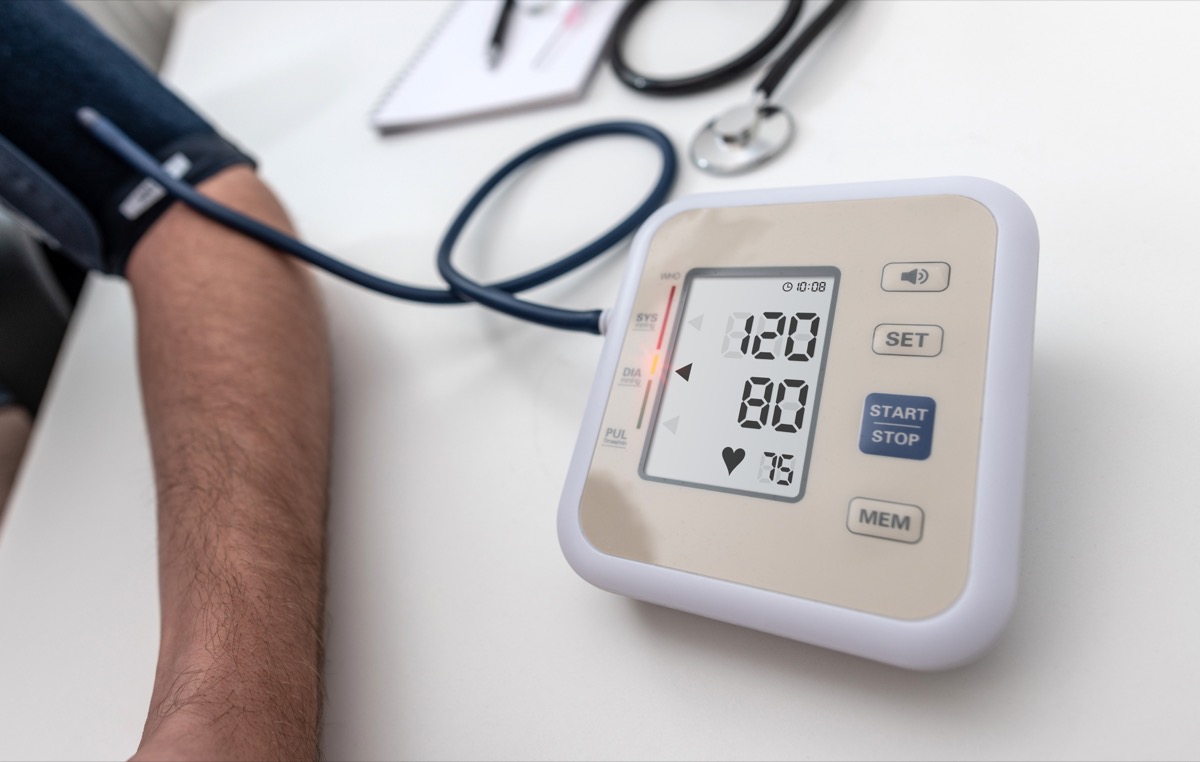Most Common Health Problems After Age 60, Say Doctors
Chronic disease isn’t an inevitable part of getting older, but it’s all too common. According to the National Council on Aging, eighty percent of adults over retirement age have one chronic health condition, and 68% have more than one. These are the five most common health conditions adults older than 65 on Medicare were treated for. Here’s what you need to know about them, how to treat them—and how to avoid them, if at all possible. Read on to find out more—and to ensure your health and the health of others, don’t miss these Sure Signs You Have “Long” COVID and May Not Even Know It.

According to the NCOA, 27% of older adults are treated for diabetes. Earlier this year, the World Economic Forum described diabetes as a “silent epidemic,” noting that it killed three times as many people as COVID in 2020. In diabetes, the body becomes unable to process blood sugar and transport it to the body’s cells for energy. Chronically elevated blood sugar levels can damage the linings of blood vessels, leading to heart disease, stroke, and blindness. Experts predict that one in 10 people of all age groups will have diabetes by the year 2045. To avoid it: Eat less added sugar and processed foods; substitute plenty of fruits and vegetables instead. Exercise regularly. And keep your weight in a healthy range.
RELATED: Sure Signs You May Be Getting Diabetes, According to Doctors

Twenty-nine percent of older people were treated for ischemic heart disease, in which plaque builds up on the walls of arteries, narrowing them and increasing the chances of heart attack or stroke. According to the American Heart Association, to prevent heart disease at any age, eat a healthy diet, get at least 150 minutes of moderate-intensity exercise each week, and know the warning signs of a heart attack or stroke. After age 60, keep your weight down and ask your doctor for an ankle-brachial index test, which can detect the buildup of plaque in arteries in the legs.
RELATED: Over 60? Stop Doing This ASAP, Say Experts

Nearly a third of older adults suffer from the joint pain and swelling caused by arthritis. According to the CDC, getting regular exercise can help (low-impact exercise such as walking and swimming are best), as can maintaining a healthy weight—excess weight can put added pressure on joints. And if you’re still using tobacco, stop.
RELATED: 10 Warning Signs You Have Alzheimer’s, Says CDC

Nearly half of older adults have high cholesterol, a buildup of fats in the blood that can cause clogs in the arteries, leading to a heart attack or stroke. Experts advise getting your cholesterol checked every five years, but older adults may need it done more frequently. Your total cholesterol level should be less than 200 milligrams per deciliter (mg/dL), with an LDL (“bad cholesterol”) of less than 100 mg/dL and an HDL (“good cholesterol”) level of 60 mg/dL or higher. To keep your levels healthy, eat a diet low in saturated fat and trans fats, exercise most days of the week, and keep your weight in an ideal range. If your bad cholesterol is high, it’s not necessarily because of your diet—your doctor may advise taking medication to keep your heart healthy.
RELATED: 7 Signs Someone is Getting Dementia, According to Experts

According to Harvard Medical School, today more than 70 percent of men over age 55 technically have high blood pressure. The American Heart Association says it should be 120/80 or below. Over time, high blood pressure can damage blood vessels, vastly increasing your risk of stroke, heart attack and dementia. To lower your risk, get your blood pressure checked regularly, and follow your doctor’s advice on how to keep it in a healthy range. The biggest pro tips: Eat a heart-healthy diet (like Mediterranean or DASH), maintain an optimal weight, and stay active. And to get through this pandemic at your healthiest, don’t miss these 35 Places You’re Most Likely to Catch COVID.




